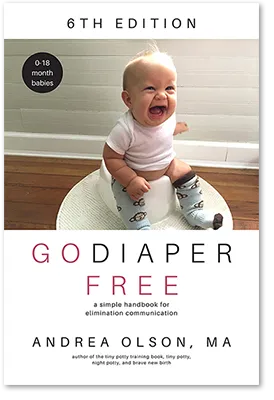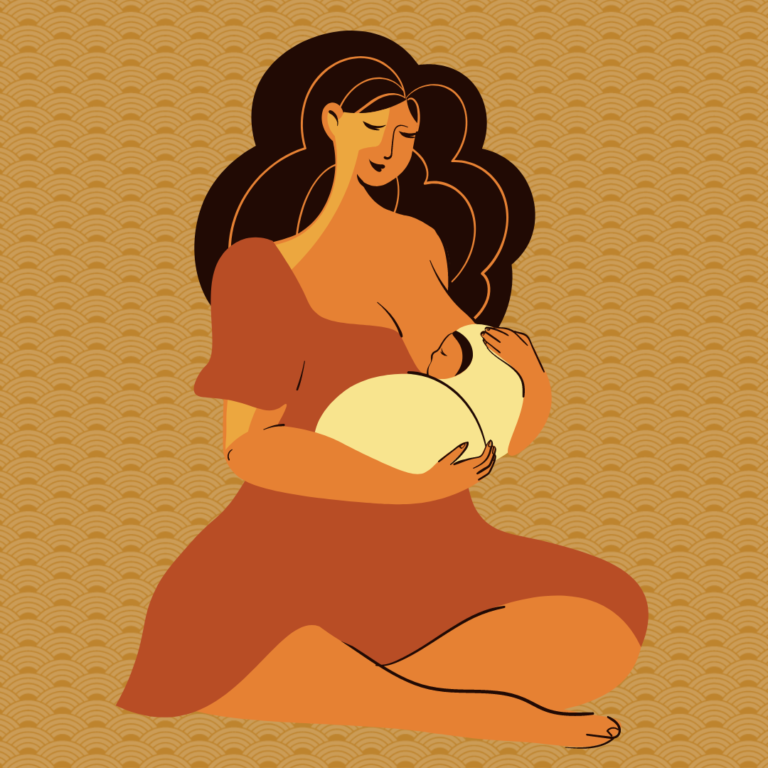6 Tips to Get the Most Out of Infant Potty Training/EC
*This post contains affiliate links to help pay the fees of running a blog.
These are 6 tips to get the most out of infant potty training/EC. They come from my experiences of doing elimination communication with my first son from 2 weeks to 10 months and my second son from 1 week onward (still a baby). My first son peed and pooped purely in diapers from 10 months to 20 months. At 20 months, he was fully potty trained. Here’s what I learned to hopefully help others get the most out of infant potty training/EC. As always, take what works, and leave the rest.
#1 Read/Listen To “Go Diaper Free” by Andrea Olson
I got the book “Go Diaper Free” during their Father’s Day sale and listened to the audiobook while driving to and from work. It’s hard to find time to sit down and read, so I really appreciated that an audiobook comes with her paperback book. “Go Diaper Free” is an incredibly comprehensive handbook. Andrea gives you the basics of elimination communication/infant potty training along with all the what-if scenarios that you can think of plus dozens you never would have thought of. What I appreciate the most is how Andrea doesn’t say infant potty training/elimination communication has to look a certain way. She maintains that you are the expert on your child and provides a complete set of tools to pick and choose from.
As I did and continue to do infant potty training/elimination communication with my sons, I was well prepared with possible solutions for inevitable problems. Even better, I was affirmed to follow my maternal instincts. Andrea’s encouragement to listen to my gut was what I needed as a new mom. I left the diaper on after my first became too busy with walking and wrapped up with potty independence at 20 months. “Go Diaper Free” is a Mrs Mama Nurse recommended book because it encourages parents to take what works and leave the rest.

#2 Know That You Can Do Infant Potty Training/Elimination Communion with Disposable Diapers
I admit that I was horrified at the thought of using cloth diapers. “Go Diaper Free” mentioned using disposable diapers by Dyper, so I decided to go ahead and use regular disposable diapers. One day I will use all biodegradable diapers, but I admittedly can’t afford that with student loans still hanging over my head. Next baby. Since my boys rarely pooped in their diapers, I chose to use the thin, cheap Parent’s Choice diapers during the day and the bulk, thick Kirkland brand diapers at night. My diaper consumption is considerably less than friends who do full-time diapering. In fact, my boys tend to outgrow the diapers before I’ve finished a case. A case of about 200 Parent’s Choice diapers will last me about 2-2 ½ months, and a case of about 200 Kirkland Diapers will last about 3 months. This is a HUGE saving for us while also providing the convenience I need.
#3 Know That You Can Stop For A While And Still Help Your Child Achieve Potty Independence Later
As I mentioned earlier, I switched from elimination communication/ infant potty training to full-time diapering when my first was 10 months. He was walking and not interested in sitting on a potty. I was living with my parents while my husband was doing military training. They were not supportive of infant potty training/elimination communication. I also suffered a miscarriage at this time that was especially painful with my husband gone and unable to come home. We were also in the middle of a permanent change of station move. Needless to say, I decided to go back to full diapering because that’s what worked for me at the time. Interestingly, even after going back to full diapering, my son never had a blowout. He never pooped at night, and I still maintained a strong sense of when he had pooped and needed a diaper change. Thankfully, I had the confidence from “Go Diaper Free” and another book called “Oh Crap Potty Training” by Jamie Glowacki to help my son attain potty independence at 20 months. It all worked out, and I wouldn’t change a thing.
#4 Know That It’s Ok And Still Useful To Do It Part Time
This is possibly the most important of my 6 tips to get the most out of infant potty training/EC. With my first son, I tried to catch every pee and caught 80% of them. He never cued, but natural timing worked great with him. He always pooped in a potty unless he was sick. I could count on one hand the number of poopy diapers I changed from his birth to 10 months old. With my second son, I actually wasn’t sure if I was going to do elimination communication/infant potty training again. It took a lot of attention with my first, and I wasn’t sure if I could spare it with 2 under 2. My second son had terrible gas pains though, and I could tell that he was trying desperately to poop. The old training from our first son kicked in, and I ended up doing elimination communication/infant potty training again. I am so incredibly grateful that I took the time to learn about infant potty training/elimination communication with my first. The relief in my little newborn’s body when I helped him do his first poop was so worth it.
He was a tough newborn until we figured out the root cause of his gas (my consumption of eggs and almonds), but I am absolutely convinced that he would have had diagnosable colic without elimination communication/infant potty training. I only potty him when he wakes up, before he sleeps, and occasionally when he is really grunting. My aim has only been to help him poop and get gas out, so I only do elimination communication/infant potty training part-time. It really works for us though, so as Andrea says in “Go Diaper Free,” do what works for your family.
#5 Buy Baby Clothes That Are Easy to Potty Baby In
This tip goes a long way toward making elimination communication/infant potty training more manageable. In the warmer months, my babies just stayed in a diaper because we didn’t have air conditioning, and it was hot. Sometimes they wore a T-shirt or a onesie if going out. I wanted to see the diaper so that if my first son started to pee, I could take him to the potty immediately. During the winter, I put him in long sleeve onesies with fleece booties. The onesies covered the diaper which wasn’t great, but now they have chaps through Tiny Undies. Chaps cover the legs while leaving the front of the diaper exposed, so you can see pee. I didn’t know about chaps with my first, so I never used them. With my second son, I chose to only do part-time infant potty training/elimination communication, so Carter’s 2-Way Zip Sleep and Play has been my go-to as it gets colder. I can unzip from the ankle to potty him without having to get him completely naked. If only ALL footy pajamas were 2-way zip. I hate getting completely naked to pee in them as an adult.
#6 Keep a Roll of Paper Towels and Spray Cleaner By Wherever You Potty Baby
This is especially true if you have boys. Even when I point the penis down, pee can still end up shooting straight up in the air. At least with my boys it does. Having low sinks makes it extra challenging as well. I prefer pottying in the sink, so I can see my baby’s sweet giggly face while I potty them. It’s become a great bonding time for us, but pee and poop can land outside the sink bowl sometimes with low counters and a tired mama. I keep a spray bottle of white vinegar with citrus essential oils mixed in on the counter with a roll of paper towels. The paper towels are great for wiping up messes that go out of the sink bowl, and I spray down the sink after every time I potty the baby.
I hope these tips are helpful in some way or another. They come from my own experiences. If you have any additions to these 6 tips for getting the most out of infant potty training/EC, drop them in the comments! As always take what works, and leave the rest.



